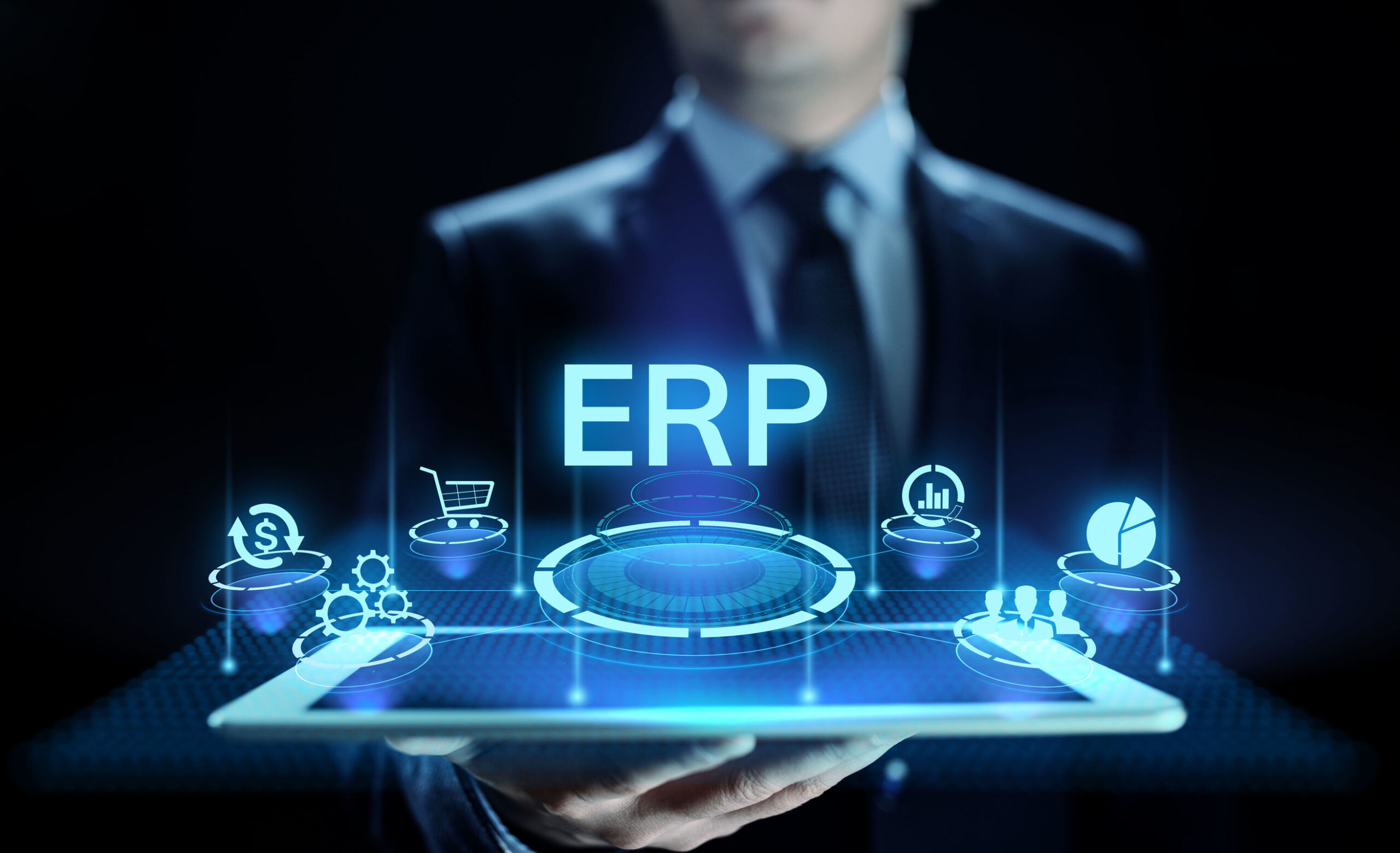At the crux of innovation, you’ll find technology. Powerful tools have allowed us to communicate easier, work more efficiently, and solve problems that plague our professional and personal lives. Since the dawn of the internet age, software has shifted from an expensive luxury to an essential part of any enterprise.
Early on, many companies had to adopt separate solutions for each aspect of their business: purchasing, accounting, engineering, sales, and more. With so many siloed systems, enterprises struggled to see their businesses as a whole – which made it impossible to scale. Organizations quickly began looking for a way to integrate the various aspects of their business and allow their teams to operate from a holistic set of data. That’s where ERP came in.
What is ERP?
Enterprise Resource Planning (ERP) software integrates, standardizes, and helps streamline business processes across a swath of departments. ERP software allows for the automation of certain focused business tasks, reducing manual labor and creating a shared database.
ERP solutions allow employees from separate departments, like accounting and engineering, to rely on the same set of data and pull any relevant information they need to do their jobs more effectively. This not only allows for easier collaboration, it also ensures that resources are used more efficiently and that the entire customer journey is more transparent to employees.
History: MRP Systems to ERP Systems
In the 1960s, the concept of ERP originated in the manufacturing industry. Product-based organizations used centralized computer systems to automate inventory. These were usually internally created systems and existed to track the amount of products made versus quota. With the goal of furthering software’s ability to optimize production and distribution, IBM partnered with a manufacturer of construction machinery: J.I Case.
IBM and J.I Case created Machine Requirements Planning (MRP) software. This software, simplistic by today’s standards, would require rooms of computers and processors that were used to leverage arithmetic to help manufacturers answer questions like: How much of a certain material should I order? The first iteration of the MRP, MRP I, focused primarily on inventory control. In the 1980s, MRP I was expanded on and evolved into the MRP II, which provided additional features including finances, general accounting, demand forecasting, and quality assurance.
It wasn’t until the 90s that Gartner coined the term Enterprise Resource Planning (ERP) to differentiate from MRP-only solutions. Gartner defined ERP as “an integrated suite of business applications.” The first ERP system was implemented in the 90s and expanded on the basic inventory control and manufacturing processes of previous iterations.
How Does an ERP System Work?
In order to understand how an ERP system works, you have to understand its main goal: to improve organizational efficiency by improving the use of a company’s resources.
ERP takes all of the functions essential to a growing business and integrates them into one complete system. More specifically, ERP takes data from various departments and assimilates it into a common database, enabling leaders to monitor the pulse of a company using a single vision of reality.
ERP systems have various modules, each addressing a specific business requirement. These modules are separated for ease-of-use, but they all push information into a central database. For example, companies focused on the efficient creation of products will have a module for accounting, inventory, order management, and customer relationship management (CRM).
On Premise, SaaS or IaaS
ERP systems may be deployed and managed on-site in a company’s facility. Or the system may be deployed on an off-site, or cloud server. There are essentially two options for companies that want to embrace cloud-based ERP solutions.
- ERP as a cloud-based SaaS (software as a service)service. In general, most businesses should be fine with this option. The main drawback is that customers cannot create custom code, so those that need customized solutions will need to look at the second option. One of the main advantages of implementing a cloud-based ERP product is companies not having to host it on their own servers. In general, this option is more cost-effective and easier to upgrade.
- ERP in an IaaS (infrastructure as a service) cloud. If a company needs a custom-coded ERP product, ERP as a service won’t work. To operate a customized ERP product in the cloud, companies will need to find an IaaS provider, which manages their servers into a different location.
Wrapping it Up
ERP software solutions allow for the better utilization of resources and project management that helps accurately report on an organization’s financial health and processes. The key to an ERP’s ability to increase organizational efficiency? A centralized database that acts as one source of truth for an enterprise. Although ERPs systems have their roots in the manufacturing industry, today almost any industry can benefit from an ERP system.




